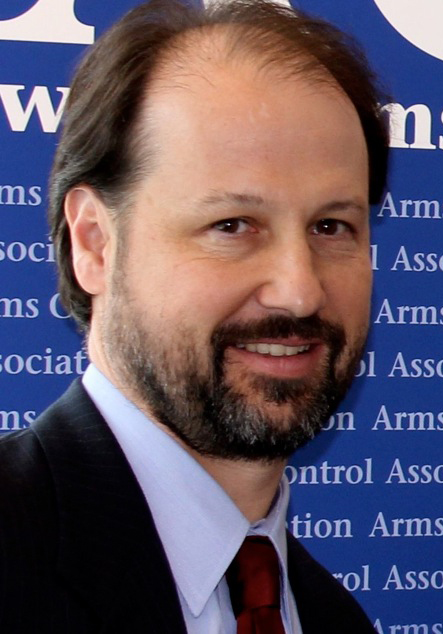"No one can solve this problem alone, but together we can change things for the better."
Time to Close the Iran Deal
January/February 2015
The failure of Iran and the six-country group known as the P5+1 to bridge their differences on a comprehensive nuclear agreement by their November 2014 target date is disappointing. Nevertheless, a historic agreement to prevent a nuclear-armed Iran is attainable within the next several weeks and certainly before their new July deadline.
 The agreement would block Iran’s major potential pathways to nuclear weapons development—the uranium-enrichment route and the plutonium-separation route—guard against a clandestine weapons program, and remove a major threat to international security. To get to “yes,” the two sides must act with renewed determination, and Iran in particular must demonstrate greater flexibility on key issues.
The agreement would block Iran’s major potential pathways to nuclear weapons development—the uranium-enrichment route and the plutonium-separation route—guard against a clandestine weapons program, and remove a major threat to international security. To get to “yes,” the two sides must act with renewed determination, and Iran in particular must demonstrate greater flexibility on key issues.
There is no time to waste. Some members of the new, Republican-led Congress are threatening to advance new Iran sanctions legislation and set unrealistic requirements for a nuclear deal. With a deal so close at hand, new sanctions are unnecessary and would be counterproductive. Moreover, they would violate the terms of the successful November 2013 interim nuclear agreement and prompt Iran to take escalatory steps.
Over the past year, Iran and the P5+1 (China, France, Germany, Russia, the United Kingdom, and the United States) have made significant progress toward long-term solutions on major issues of proliferation concern. For instance, the two sides agree in principle that the design of and fuel for Iran’s Arak heavy-water reactor can and should be modified to drastically cut its output of weapons-grade plutonium.
They agree that Iran should implement and ratify measures that would allow short-notice inspections of undeclared sites and provide early notification of new nuclear projects to the International Atomic Energy Agency (IAEA). This would allow for prompt detection and disruption of a clandestine nuclear weapons effort.
Both sides understand that the ongoing IAEA investigation of past Iranian activities with “possible military dimensions” will continue after a comprehensive nuclear agreement is reached. At the same time, it is clear that all sanctions tied to this particular issue will not be removed unless the questions are adequately resolved. This makes it more likely that if there is a comprehensive nuclear agreement, Iran will have a stronger incentive to provide the IAEA with the information necessary to determine that no such efforts are taking place now or will in the future.
Some members of Congress erroneously suggest that the only way to block Iran’s path to nuclear weapons is somehow to persuade Iran’s leaders to dismantle the country’s major enrichment facilities and other elements of its “illicit nuclear program,” as Sens. Robert Menendez (D-N.J.) and Mark Kirk (R-Ill.), two leading advocates of new sanctions, recently put it. But it is unrealistic to expect that Iran’s leadership would accept such harsh terms, even under tougher sanctions pressure.
Instead, negotiators from Iran and the P5+1 are discussing a combination of realistic, practical measures that would establish verifiable, long-term, sustainable limits on Iran’s uranium-enrichment capacity. These must be sufficient and irreversible enough so as to block Iran from quickly amassing fissile material for weapons use while providing Tehran with a politically and technically acceptable enrichment capability consistent with its practical needs.
Iran’s 10,200 first-generation, operating centrifuges provide a capability that far exceeds its foreseeable civilian nuclear fuel needs. At the same time, they can produce enough weapons-grade uranium gas for one nuclear bomb (25 kilograms) in about two to three months. The P5+1 is, for good reason, pressing Iran to significantly reduce its enrichment capacity in order to increase the time Iran would need to produce a significant quantity of weapons-grade material to a year or more.
Effective limits on Iran’s uranium-enrichment capacity will involve several complementary measures, including reducing the capacity of currently operating centrifuges; verifiably disabling centrifuge machines that are installed but not yet operating; limiting, but not stopping, research on more-advanced centrifuges; and reducing the size of Iran’s stockpile of low-enriched uranium and converting it to oxide form.
The two sides are closer to agreement on the right formula, but differences remain. In late November, Iranian negotiators proposed lowering the number of its operating centrifuges, but they will need to reduce the number further to assure the P5+1 that Iran cannot make a dash for nuclear weapons.
The P5+1 has promised Iran that it will phase out nuclear-related sanctions as Iran meets its nonproliferation obligations. But if the P5+1 wants to convince Iran to accept tighter restrictions on enrichment, the six-country group should agree to the faster removal of certain sanctions imposed by the UN Security Council and the European Union that are not tied to the weaponization issue.
An effective, verifiable nuclear deal is within reach if the two sides—and the U.S. Congress—make smart choices in the days and weeks ahead.
